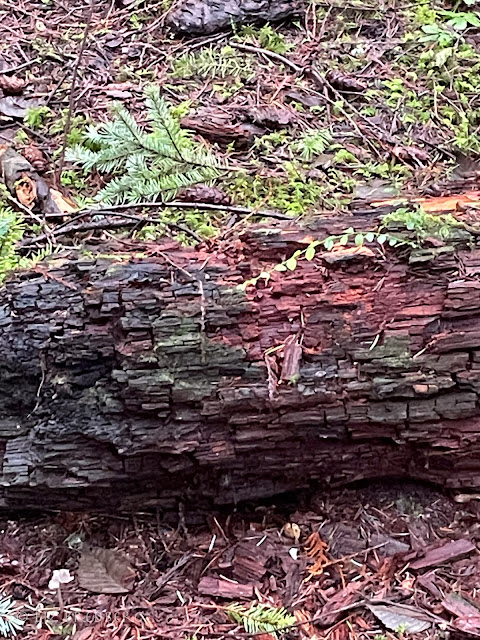7 January
A visit to the Forest and Wetlands in the dark season. I had anticipated that there would be less to see in this time of year, and perhaps there is-spring will tell the tale. There is, however, vitality in the growth of mosses and fungi that I had not expected. Nor had I realised how beautiful much of that growth would be.
I've decided to record visits on eBird in hopes of increasing public awareness of the area. There hasn't been an abundance of birds, but it seems as if tracking changes in the bird population may be of interest.
https://ebird.org/checklist/S158377470 is the url for this visit's observations.
At times evergreen sword ferns combine with mossy stumps and trees to yield sculptural effects.
Toothed jelly fungus appears in a variety of forms throughout the forest. It is identified as saprophytic (growing on dead vegetation), although the host may be obscured by moss or other leaf matter. This growth on a fallen log is plainly saprophytic.
As we approached the Marsh, we heard trumpeter swans, then saw three high overhead--too high to photograph.
The open water at the southeast end of the Marsh had a small number of ring-necked ducks and mallards.
The bald eagle occupied his usual vantage over the marsh. It's not an accessible tree for those of us on foot, but I'd suspect there may be scraps of waterfowl beneath it.
And at this point, the rain, which had been merely sporadic, became more intense and we retreated to the forest and the parking lot.













Comments
Post a Comment